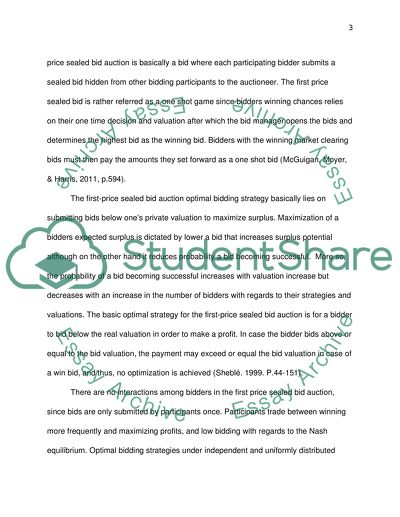Cite this document
(“Optimal Bidding Strategies Essay Example | Topics and Well Written Essays - 1500 words”, n.d.)
Optimal Bidding Strategies Essay Example | Topics and Well Written Essays - 1500 words. Retrieved from https://studentshare.org/macro-microeconomics/1443896-assuming-independent-and-uniformly-distributed
Optimal Bidding Strategies Essay Example | Topics and Well Written Essays - 1500 words. Retrieved from https://studentshare.org/macro-microeconomics/1443896-assuming-independent-and-uniformly-distributed
(Optimal Bidding Strategies Essay Example | Topics and Well Written Essays - 1500 Words)
Optimal Bidding Strategies Essay Example | Topics and Well Written Essays - 1500 Words. https://studentshare.org/macro-microeconomics/1443896-assuming-independent-and-uniformly-distributed.
Optimal Bidding Strategies Essay Example | Topics and Well Written Essays - 1500 Words. https://studentshare.org/macro-microeconomics/1443896-assuming-independent-and-uniformly-distributed.
“Optimal Bidding Strategies Essay Example | Topics and Well Written Essays - 1500 Words”, n.d. https://studentshare.org/macro-microeconomics/1443896-assuming-independent-and-uniformly-distributed.


